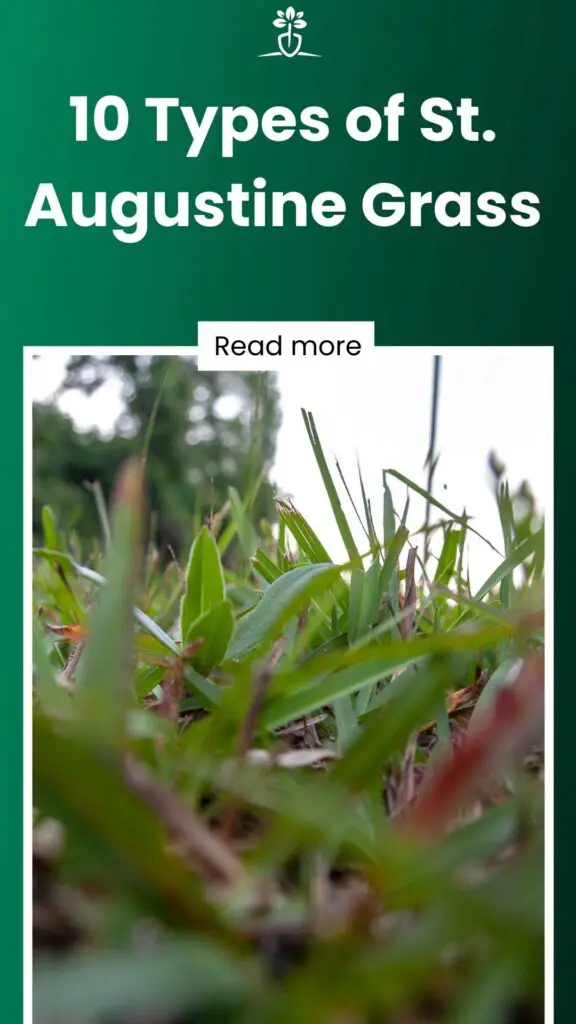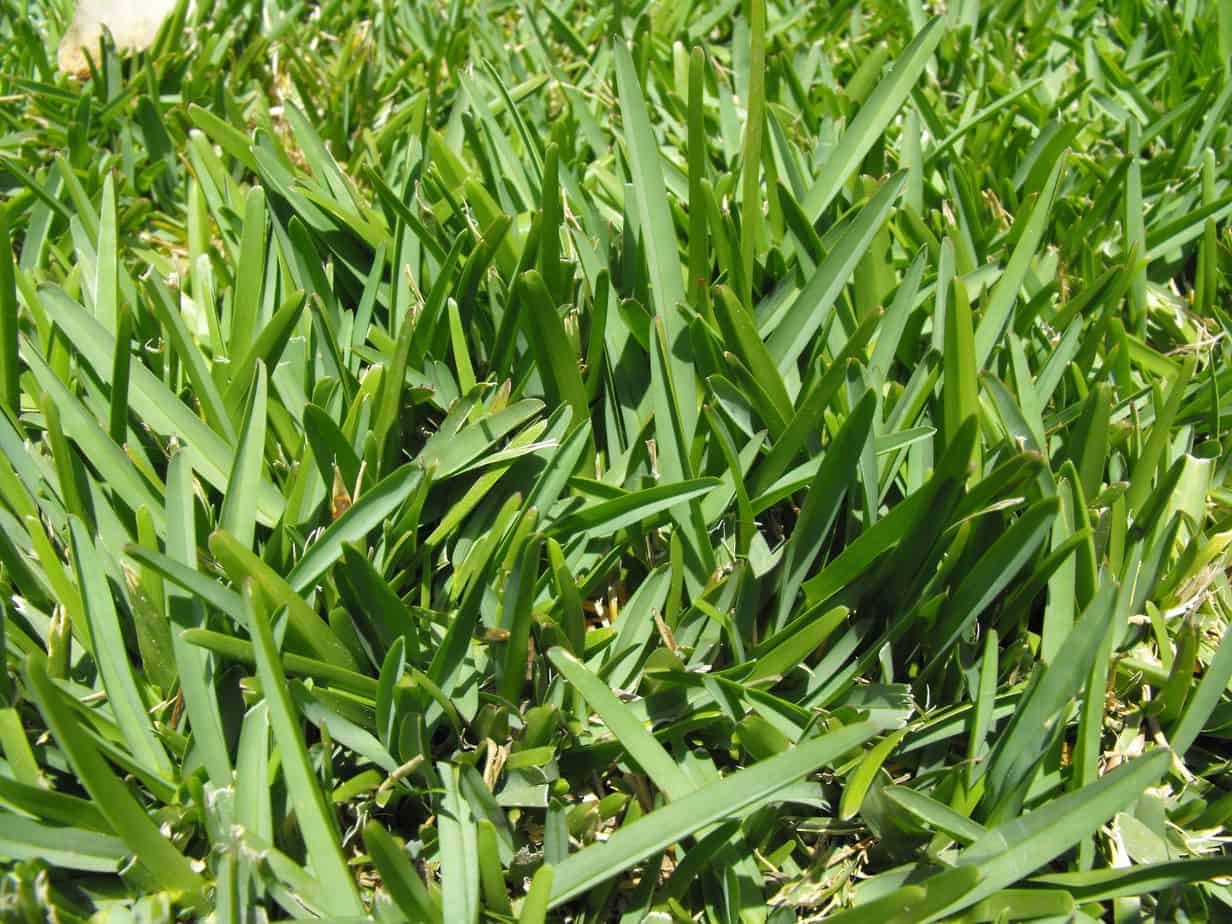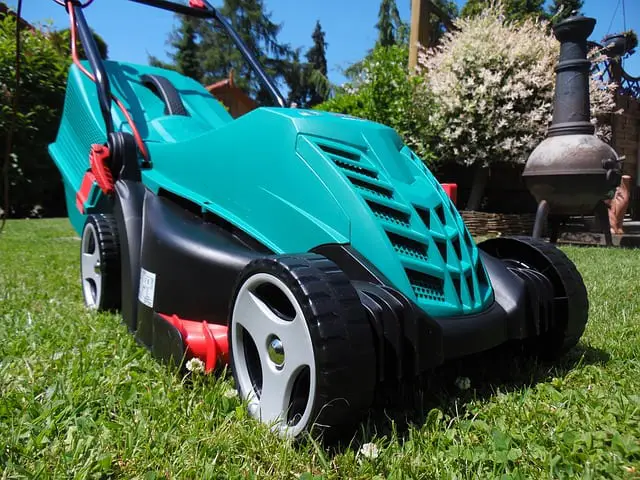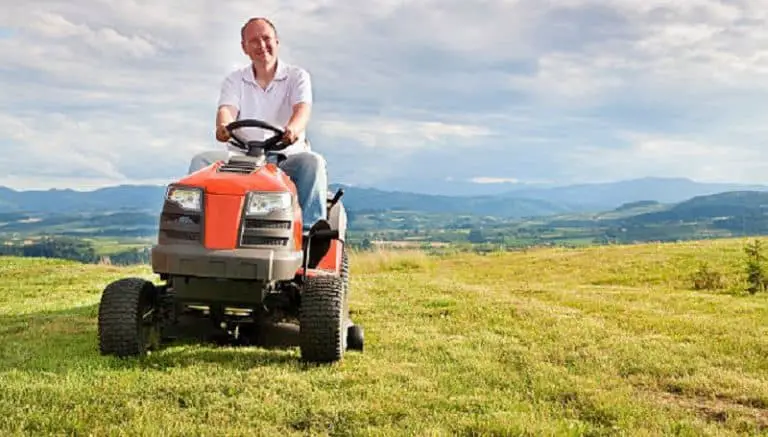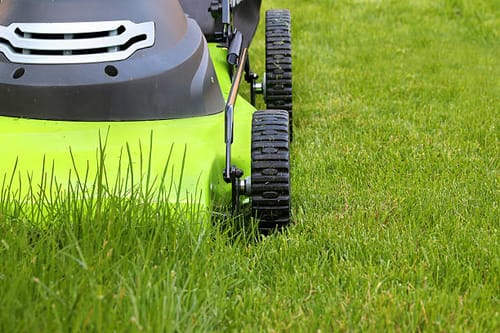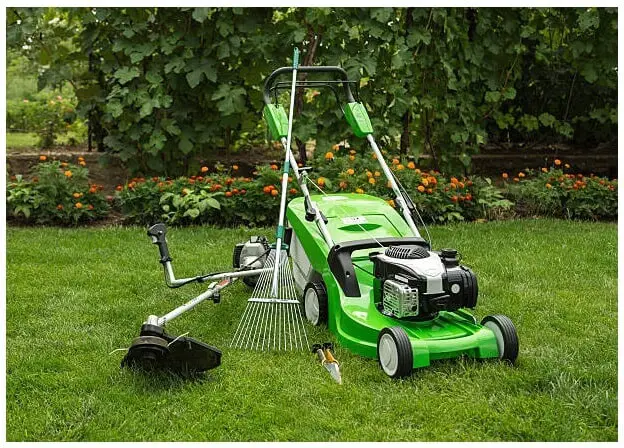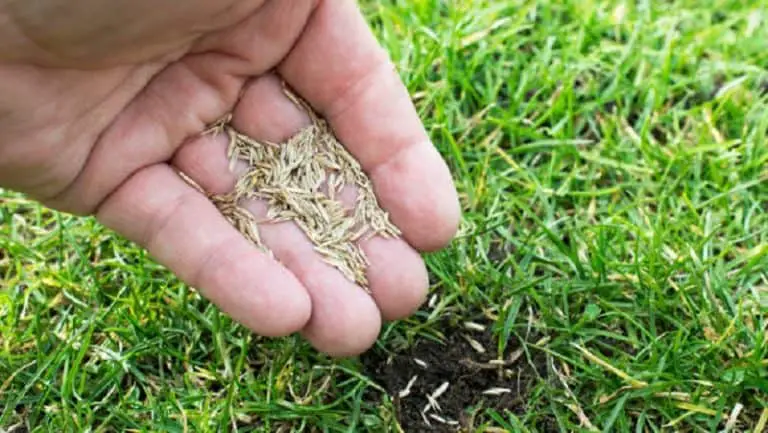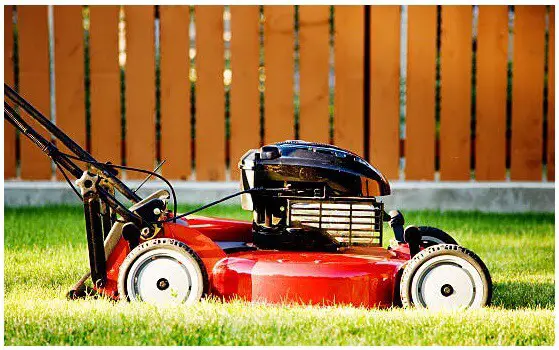10 Types of St. Augustine Grass
St. Augustine grass shines brightest in warm weather. It’s famous for conserving lots of water and comes in many diverse types, making it a true standout.
Below we discuss the ten varying types of St. Augustine and which one is best for your lawn.
Some of the most famous St. Augustine grass types include Floratam, Palmetto, CitraBlue, Bitterblue, Raleigh, and Seville. They can be differentiated based on their color, texture, and recommended mowing height.
Contents
Most Popular St. Augustine Cultivars and their Characteristics
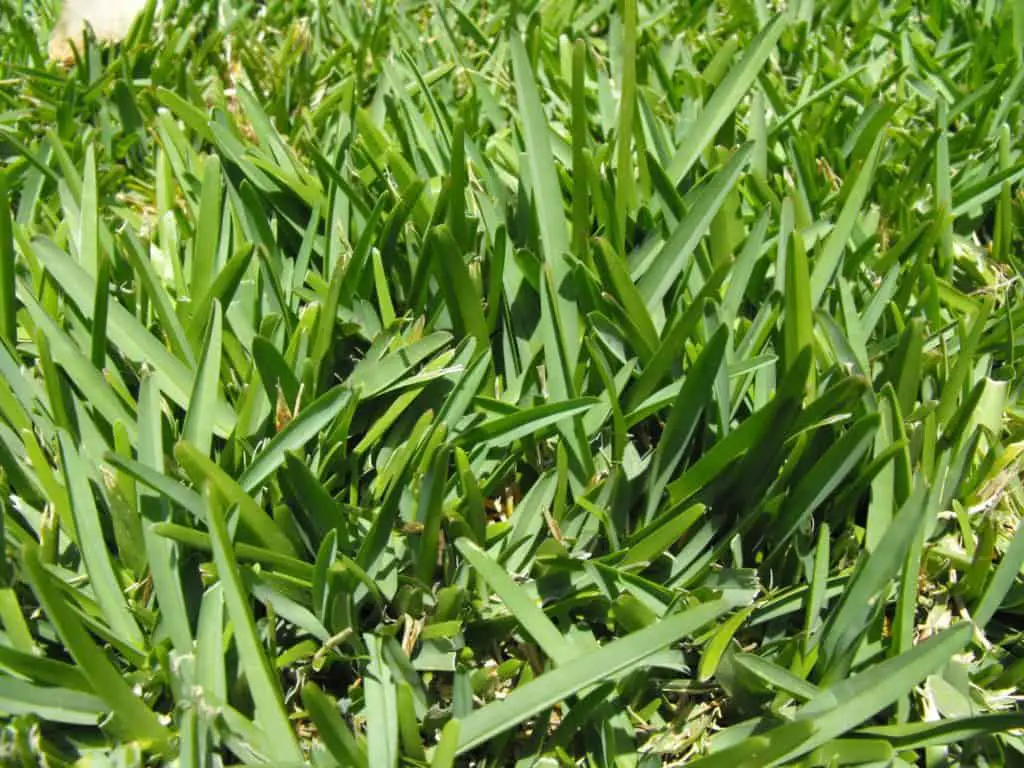
If you are a fan of dense, bluish-green turf and live in warm regions, St. Augustine is the choice of grass for your lawn. This turf grass grows well in full sun but also exhibits good shade tolerance.
See also: The best lawn mowers for St. Augustine Grass.
Some cultivars of St. Augustine grass have superior shade tolerance than the others.
What exactly are cultivars? Cultivars, in the simplest of terms, are cultivated varieties that are developed through breeding for desirable characteristics. Cultivars do not occur naturally; however, there may be some exceptions in the form of plant mutations.
When we talk about St. Augustine grass types, we are talking about cultivars. We will discuss ten of these cultivars, some of which might be better suited for home lawns than others.
However, which cultivar is more suitable for a certain lawn type is highly subjective on several regional and environmental considerations like seasonal changes.
We can divide St. Augustine cultivars into two categories: standard and dwarf.
1. Classic
In the early 2000s, Woerner Turf released the “Classic” cultivar. Unlike some other cultivars, “Classic” has good cold tolerance, and thus, it can be grown in several states with colder temperatures. It has an average shade tolerance. However, any superiority to other cultivars in this regard is yet to be backed up by research.
This dark green-colored St. Augustine strain has the recommended mowing height of 3 ½ to 4 inches.
Characteristics Quickview
- Color: Dark Green
- Shade Tolerance: Medium
- Texture: Coarse
- Cold Tolerance: Good
- Mowing Height: 3 ½ – 4 inches
- Resistance to Chinch Bugs: Unknown
2. Floratam
Released in 1973 by Texas A & M University and University of Florida, “Floratam” is an upgraded variety of St. Augustine grass. It is one of the most preferred cultivars of turfgrass, especially in Florida, since it grows well in sunny areas.
However, this St. Augustine grass strain is not very tolerant of shade and cold, making it more susceptible to freeze damage than other cultivars.
To grow well, “Floratam” needs at least six hours of direct sun exposure. Although, when provided with ideal lighting conditions, it rapidly grows in summer and spring. It is dark green with coarse-textured, long, and wide leaf blades.
“Floratam” is a standard St. Augustine cultivar, and thus, its mowing height recommendation is 3 ½ to 4 inches.
Since chinch bug infestation is one of the common problems for St. Augustine grass varieties, “Floratam”’s resistance to it was considered one of its best qualities. Unfortunately, this attribute has been lost with time.
Moreover, it can also develop Gray Leaf Spot, one of the lean diseases that generally plague St.Augustine grass.
When the temperature is above 85 degrees Fahrenheit, do not use atrazine herbicide on “Floratam.”
Characteristics Quickview
- Color: Dark Green
- Shade Tolerance: Fair
- Texture: Coarse
- Cold Tolerance: Poor
- Mowing Height: 3 ½ – 4 inches
- Resistance to Chinch Bugs: Slight
3. DeltaShade
“DeltaShade,” like “Classic,” is another proprietary St. Augustine cultivar – this one was released in 2005 by Environmental Turf. According to research, this cultivar has good tolerance to shade, but it is still not comparable to the dwarf cultivars in that aspect.
Even though there is a lack of research in this regard, “DeltaShade” seems to perform well in colder conditions. When compared to other cultivars, it is lighter green. Like all standard cultivars, it should also be mowed to the height of 3 ½ to 4 inches.
Characteristics Quickview
- Color: Bright Green
- Shade Tolerance: Good
- Texture: Coarse
- Cold Tolerance: Good
- Mowing Height: 3 ½ – 4 inches
- Resistance to Chinch Bugs: Unknown
4. Bitterblue
“Bitterblue” was selected in the 30s as an improved St. Augustine grass variety. Even though nowhere near fine enough, this dark blue-green grass variety’s texture is relatively better (read: finer yet dense) than many other St. Augustine grass cultivars.
It performs well in terms of cold and shade tolerance, which makes “Bitterblue” quite an adaptable choice for residential lawns. However, it is still susceptible to Gray Leaf Spot and chinch bugs.
According to the Alabama A&M & Autumn Universities extension, when compared with other St. Augustine cultivars, “Bitterblue” shows poor tolerance to atrazine and simazine herbicides.
Characteristics Quickview
- Color: Dark Green
- Shade Tolerance: Good
- Texture: Coarse
- Cold Tolerance: Good
- Mowing Height: 3 ½ – 4 inches
- Resistance to Chinch Bugs: Slight
5. Raleigh
If you live in a colder region but wish to have a St. Augustine grass lawn, then “Raleigh” is the cultivar for you. Released in 1980 by the North Carolina University, this St. Augustine variety has excellent cold tolerance compared to its contemporaries.
However, it comes with its own set of drawbacks.
This coarse-textured, light-green-colored cultivar is an easy target for chinch bugs. Moreover, it is also highly prone to developing Gray Leaf Spot and Large Patch disease.
As expected, this cold-hardy variety does not perform as well in peak summers. Its growth declines, and yellowing appears. The yellowing can be remedied through iron supplementation. “Raleigh” grows best in medium to low pH heavier clay soils.
Characteristics Quickview
- Color: Medium Green
- Shade Tolerance: Medium
- Texture: Coarse
- Cold Tolerance: Very Good
- Mowing Height: 3 – 4 inches
- Resistance to Chinch Bugs: Poor
6. Palmetto
Sometimes called the “semi-dwarf cultivar,” “Palmetto” grows shorter than other St. Augustine grass varieties. Available since the mid-1990s, this cultivar was found in 1988 by a sod grower in Florida.
“Palmetto” is usually hailed as an excellent option for shady lawns, but research shows that even though this grass type can thrive in partial shade as well as full-sun exposure, it does not perform as great in heavy shade.
In humid conditions, bugs and diseases can also be a nuisance for “Palmetto.”
Since it has comparatively shorter growth, this light green grass variety should be mowed as high as 3-4 inches.
Characteristics Quickview
- Color: Lighter Green
- Shade Tolerance: Fair (Good for partial shade)
- Texture: Fine
- Cold Tolerance: Fair
- Mowing Height: 3 – 4 inches
- Resistance to Chinch Bugs: Unknown
7. Delmar
“Delmar” is a dwarf cultivar of St. Augustine grass that grows well in shaded areas as well as colder temperatures. However, this dark-green colored grass with shorter internodes thrives in full sun too.
Since it is a dwarf variety, it has slow growth and takes more time for damage recovery. It is prone to sod webworms, chinch bugs, and Large Patch disease. “Delmar” can also develop a layer of thatch.
The recommended mowing height for this cultivar is 2 – 2 ½ inches.
Characteristics Quickview
- Color: Dark Green
- Shade Tolerance: Good
- Texture: Fine
- Cold Tolerance: Good
- Mowing Height: 2 – 2 ½ inches
- Resistance to Chinch Bugs: Poor
8. Captiva
“Captiva” is a slow-growing St. Augustine grass type with narrow blades that do not exhibit much vertical extension.
In case of excessive watering or fertilizer, this cultivar becomes susceptible to Take-all Root and Large Patch diseases. However, it is resistant to chinch bugs.
Since it is a dwarf cultivar, you can assume it has good shade tolerance, but more research and evaluation are needed before making any claims.
As with other dwarf cultivars of St. Augustine grass, “Captiva” should be mowed between 2 to 2 ½ inches of height.
Characteristics Quickview
- Color: Dark Green
- Shade Tolerance: Good
- Texture: Fine
- Cold Tolerance: Good
- Mowing Height: 2 – 2 ½ inches
- Resistance to Chinch Bugs: Good
9. Seville
The “Seville” cultivar is dark green with finer leaves. Since this is a dwarf grass type, it tends to grow slower than the commercially available standard varieties.
Webworms and chinch bugs are recurring problems with this variety of St. Augustine. It also seems prone to developing a layer of thatch that can result in lawn damage and aboveground rooting.
It has good shade tolerance but will also thrive in bright sunlight. Even though it is not a very commonly used cultivar, it tends to do well in shady lawns. When it comes to cold tolerance, “Seville” does not perform as well.
Characteristics Quickview
- Color: Dark Green
- Shade Tolerance: Good
- Texture: Fine
- Cold Tolerance: Fair
- Mowing Height: 2 – 2 ½ inches
- Resistance to Chinch Bugs: Slight
10. Sapphire
“Sapphire” is a blue-green colored St. Augustine cultivar that has purple stolons. This grass type exhibits a fine leaf appearance because its leaf blades remain folded. During the growing season, “Sapphire” spreads vigorously.
However, it is an easy target for most pests that plague St. Augustine grass varieties.
Characteristics Quickview
- Color: Blue Green
- Shade Tolerance: Unknown
- Texture: Coarse
- Cold Tolerance: Unknown
- Mowing Height: 2 – 2 ½ inches
- Resistance to Chinch Bugs: Unknown
Conclusion
St. Augustine Grass comes in varying types, each with its own set of advantages and disadvantages. Depending on where you live and the weather conditions, studying different cultivars’ characteristics gives you a better chance of selecting a grass type for your lawn.
Overall, St. Augustine, despite being a warm-season turfgrass, does quite well in partial shade.
However, if you have heavy shade where you live, dwarf cultivars are a better bet for a healthy lawn.
In warmer, sunnier regions, the most widely available cultivar is “Floratam.” However, in drier regions, “Palmetto” is quickly becoming a favorite as well.
